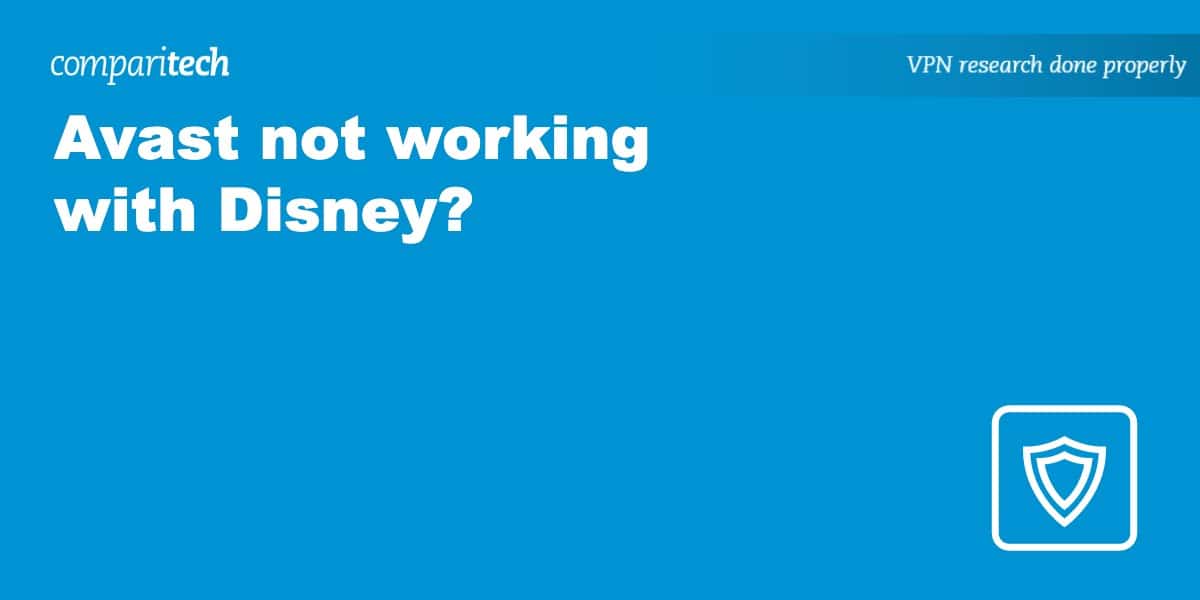Disney Plus takes its geo-restrictions pretty seriously, so if Avast VPN has been detected, you’re probably no stranger to the error 22 or error 31 codes. Fortunately, it’s not all bad news; there are ways to get around it.
Avast has been known to work with Disney in the past, so if it’s no longer working for you, something has likely changed on Avast’s network, allowing Disney to identify it.
If you’re not ready to give up on Avast yet, we’ll explain some possible reasons why Disney Plus could block it and some solutions you can try for yourself to get back up and running in this post.
Why Disney blocks VPNs
Disney Plus is one of the world’s top streaming services, so it’s incredibly protective of its content. For example, to ensure that only users from certain countries can access their library, they use geo-blocking technology to restrict access. To do this, Disney scans users’ IP addresses.
If Disney detects that you’re using a VPN’s IP address instead of your own, it may block your access and display an error code in your browser window. This is why Avast might not be working for you anymore; Disney has identified your IP address as belonging to a VPN and blocked it.
Steps to get Avast working with Disney
Fortunately, all is not lost, and there are some simple steps you can take to troubleshoot the problem and get Avast working with Disney Plus again.
- Try switching servers: First, you should switch to a different server on Avast VPN. If Disney has identified an IP address as belonging to a VPN, they may have blocked it, but they won’t have blocked all of Avast’s servers. So, try changing servers and see if Disney will let you reaccess its library.
- Clear your cache: To ensure Disney Plus recognizes the change of server location when you connect to the VPN, clear your browser cache, refresh the page, and try streaming again.
- Contact Avast support: The next step is to contact Avast’s customer support team and tell them about your issue. They may be able to suggest a solution or apply a workaround to get you up and running with Disney Plus again.
- Try using a different VPN: If switching servers doesn’t work, it may be time to switch VPNs entirely. Look for a VPN provider like NordVPN that offers fast speeds and reliable streaming. While you’re at it, make sure it offers servers in the country you want to access Disney Plus from and that it can unblock the service.
How to use NordVPN to watch Disney Plus
If you’re this far into the post, you’re likely fed up with Avast and want to try NordVPN. Accessing Disney Plus with NordVPN is the best solution; it takes minutes to get going.
Here’s how to use NordVPN to watch Disney Plus:
- Sign up for NordVPN, or try one of our next recommended providers, Surfshark or ExpressVPN.
- Head to your VPN provider’s website and download the app for your chosen device.
- Connect to a server in a country where Disney plus is available.
- Open Disney via its app or in a browser and start streaming!
- If you still get an error, we’d recommend clearing your cookies and browser cache and trying again.
WANT TO TRY THE TOP VPN RISK FREE?
NordVPN is offering a fully-featured risk-free 30-day trial if you sign up at this page. You can use the VPN rated #1 for Disney Plus with no restrictions for a month—great if you want to binge your favorite show or are going on a short trip.
There are no hidden terms—just contact support within 30 days if you decide NordVPN isn't right for you, and you'll get a full refund. Start your NordVPN trial here.
Avast not working with Disney Plus FAQs
What can I watch on Disney Plus?
Disney Plus offers a library of movies, shows, and original content from Disney, Pixar, Marvel, Star Wars, National Geographic, and more. It’s home to all Star Wars and Marvel content.
What devices can I stream Disney Plus on?
Disney Plus is available on popular streaming devices like Apple TV, Roku, Chromecast, Amazon Fire TV Sticks, and Smart TVs. You can also access Disney Plus online or via a mobile app.
What countries does Disney Plus work in?
Disney Plus is available in the UK, Canada, the US, Ireland, Australia, New Zealand, and other select European countries.







